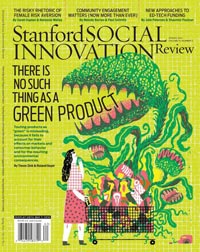How Green Is Green?
Two UCSB Profs Examine the Gospel of Green
In an interesting twist on the “green” movement, UCSB scholars Roland Geyer and Trevor Zink of the Bren environmental school have published a paper examining just how much savings are generated by products like hybrid vehicles and LED lights. For instance, they posit, if it’s a sumo-sized hybrid or one that gets driven farther than the previous car — for a new job, say — the owner could be using more petroleum and emitting more greenhouse gas in total.

Likewise, when all lightbulbs in a home or shop are changed to light-emitting diodes — which unarguably use less electricity and last longer — Geyer and Zink find that more lights are used, they’re left on for longer, people buy larger LED products (think televisions), and come up with entirely new uses like year-round twinkle lights.
But at bottom, they ask, why buy that new item at all? Producing it uses resources. What about the packaging? If the answer is to recycle it, they point out that a new product made with recycled material uses available scrap. As that particular environmental impact goes down, another producer’s goes up if less available scrap means the company uses new material.
Geyer, an assistant professor in the Bren School of Environmental Science & Management, and Zink, a 2014 PhD graduate from Bren, conclude the effort to conserve is worthwhile, but they believe “net green” should be the goal. “We define net green thus,” their paper is quoted in a UCSB press release, “A business activity is net green if, and only if, it reduces overall environmental impact.” The paper, “There Is No Such Thing as a Green Product,” appears in the Spring 2016 edition of the Stanford Social Innovation Review.



